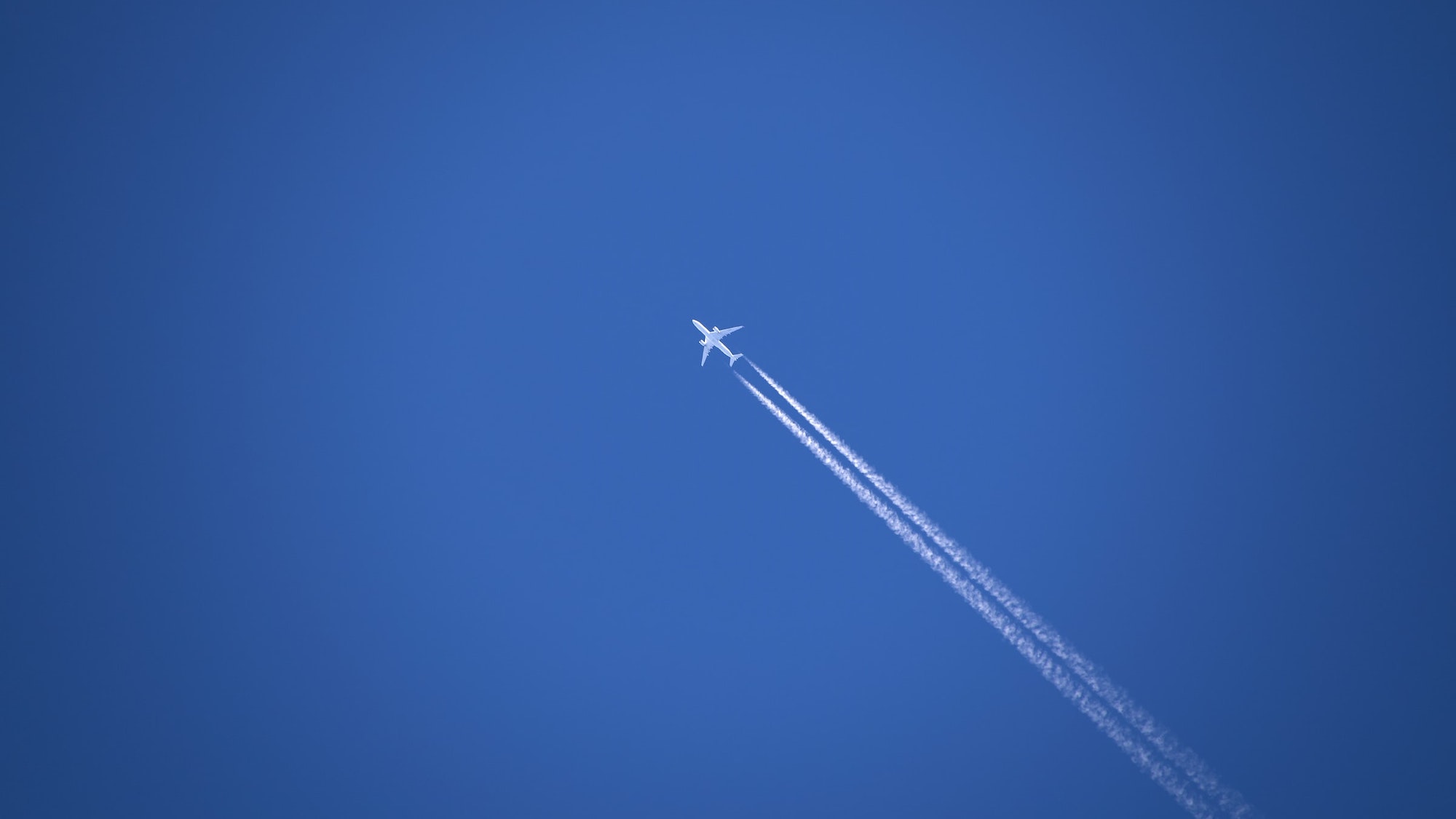

A plane drawing a white contrail line across a blue sky is clearly thousands of feet above the ground, but how high is it flying exactly? It turns out that the precise altitude an airliner has at any given point in the flight has to do with a variety of factors, such as the plane’s weight, the temperature and weather, what the pilot requests, a protocol involving what direction the plane is headed, and of course what air traffic control says to do.
When it comes to aircraft altitudes, here’s what’s up.
On another plane
“In most cases, airliners will fly in the middle 30,000s [in terms of feet],” says John Cox, a retired commercial airline pilot who now heads a consulting firm called Safety Operating Systems. “They may be as high as 40 to 41,000, but that’s relatively rare.”
Tom Adcock, a retired air traffic controller and now the director of safety and technology for the labor union National Air Traffic Controllers Association (NATCA), gives a similar estimate, pegging most traffic as occurring in the “upper 30s” and some of it reaching altitudes of 41,000 or 43,000. A Boeing 757 can fly as high as 42,000 and a 767 at 43,000; 747-400s can go higher. Various aircraft types have different maximum service ceilings.
[Related: The illuminating tech inside night vision goggles, explained]
Controllers take into account the compass direction an aircraft is flying in when giving a pilot an altitude. Although altitudes like 38,000 and 39,000 are both even numbers, “38” and “39” are even and odd. Westbound flights get even numbers like 38,000 feet, while eastbound flights receive odd numbers like 39,000. That way, aircraft traveling in opposite directions have a built-in amount of vertical spacing between them. Aircraft heading northeast or southeast would still travel at an odd altitude, while northwest or southwest would be even. “There are exceptions to the rule,” says Cox, noting that hypothetically, if he was heading east at night and wanted 32,000 feet, he’d still request it. “Worse they can do is say no.”
In a way, that odd-even system mirrors a pattern on the ground far below, where interstate highways historically received numbers that reflect their directions: Interstates that run east-west got even numbers (Route 80, for example), with the lowest numbers toward the south of the country, and the north-south interstates got odd numbers, with the lowest numbers beginning in the west (Route 5). Here’s more on that road number system.
Getting a better altitude
A number of variables go into determining the precise altitude an aircraft occupies at any given time, and Cox says generally higher altitudes are better. “You want to be pretty much as high as you can,” he says. “The jet engines are more efficient at higher altitudes, and there’s less air resistance.” A pilot is incentivized to burn less fuel because they would prefer to conclude their flight with more fuel in reserve, rather than less, to give them more options in case of delays while airborne, Cox says.
He says that higher-is-better rule of thumb holds true on brief hops, too. “You’d be amazed—even on short flights, the most [fuel] efficient way to do it is climb the airplanes up to high altitude, pull the power back, and then start back down,” he says. “I may run up to 31,000 feet and I won’t be there five minutes.”
[Related: Let’s talk about how planes fly]
The flight management computer gives a pilot information about the plane’s optimal altitude as well as their maximum altitude, taking into account the aircraft’s weight and the temperature of the air. An aircraft can climb higher after it burns off fuel and becomes lighter.
“Pilots will stay as close to either optimum altitude or max altitude as they can,” Cox says. The goal is smooth air, and low headwinds if flying west—and climbing high can accomplish that. Meanwhile, an air traffic controller may ask a plane to climb to a higher altitude than the aircraft can manage at that time, so the pilot will need to decline the request.
Commercial jets aren’t the only planes in the skies. A pilot in a Cessna 172 out for a Sunday jaunt will be below 10,000 feet (the planes aren’t pressurized), perhaps puttering around at 5,000 feet or so. A commercial turboprop would be above those aircraft but below the jets—a Bombardier Q400 like Alaska Airlines flies isn’t made to fly above 25,000 feet, for example. Turboprops like those might be in the “low 20s,” says Adcock, of NATCA.
At the tippy top are the jewelry-encrusted people in private jets, where Learjets and Gulfstreams occupy the rarefied air at around 45,000 or higher, even up to 51,000 feet.
Something special happens even higher. Cox recalls that the supersonic Concorde flew at 60,000 feet. “When you get that high, the sky gets real, real, real dark blue, and you can see the curvature of the Earth,” he says. (Space itself doesn’t technically start until you get much, much higher.) “Having been on Concorde, and been at 60,000 feet, you can see it pretty clearly there.”
